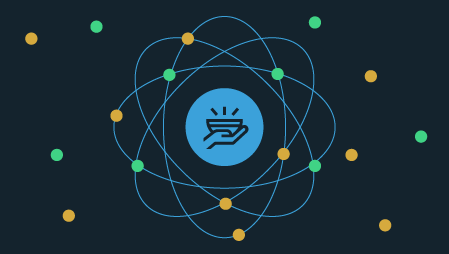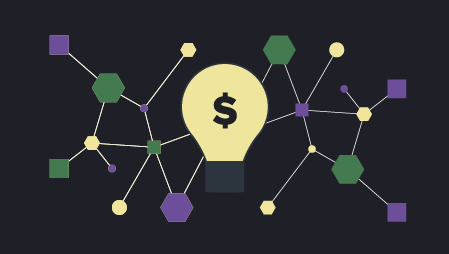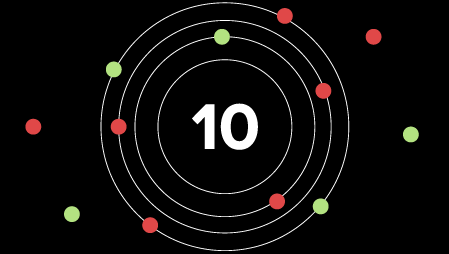For simplicity, let’s assume there are three customers (c1, c2, c3) in this batch, and one vehicle (v1) information is provided as a sale.
- P(C=c1) represents the likelihood of c1 to buy any car. Assuming no prior knowledge about each customer, their likelihood of buying any car should be the same: P(C=c1) = P(C=c2) = P(C=c3), which equals a constant (e.g. 1/3 in this situation)
- P(V=v1) is the likelihood for v1 to be sold, given it is shown in this batch, this should be 1 (100% likelihood to be sold)
Since there is only one customer making the purchase, this probability can be extended into:
P(V=v1) = P(C=c1, V=v1) + P(C=c2, V=v1) + P(C=c3, V=v1) = 1.0
For each of the item, given the following formula
P(C=c1, V=v1) = P(C=c1|V=v1) * P(V=v1) = P(V=v1|C=c1) * P(C=c1)
We can see P(C=c1|V=v1) is proportional to P(V=v1|C=c1). So now, we can get the formula for the probability calculation:
P(C=c1|V=v1) = P(V=v1|C=c1) / (P(V=v1|C=c1) + P(V=v1|C=c2) + P(V=v1|C=c3))
and the key is to get the probability for each P(V|C). Such a formula can be verbally explained as: the likelihood for a vehicle to be purchased by a specific customer is proportional to the likelihood for the customer to buy this specific vehicle.
The above formula may look too “mathematical”, so let me put it into an intuitive context: assuming three people were in a room, one is a musician, one is an athlete, and one is a data scientist. You were told there is a violin in this room belong to one of them. Now guess, whom do you think is the owner of the violin? This is pretty straightforward, right? given the likelihood of musician to own a violin is high, and the likelihood of athlete and data scientists to own a violin is lower, it is much more likely for the violin to belong to the musician. The “mathematical” thinking process is illustrated below.
According to McKinsey&Company, the overall economic impact of the IoT could reach $11.1 trillion by 2025 by surpassing the sectors such as “Automation of knowledge work,” “Cloud technology,” and “Mobile Internet.”
The Internet of Things (IoT) has immediately become an enormous part of how individuals live, work, and communicate together. With the advent of technology, web-empowered gadgets are transforming our reality into a more turned on spot to live, globally.
As per Kate Began, the Sales and Marketing manager of Polycase, There are numerous advantages to the expanded innovation and adoption of IoT, from the ability to screen cargo anytime and anywhere, to play your preferred music in the shower from a waterproof Bluetooth speaker. Still, there are as yet numerous difficulties and hurdles to broad IoT adoption and a safe, functioning global device network.
Basically, there are numerous factors that are important and play an important role in the growth and development of IoT, such as security challenges to the perils of higher customer expectations. As per the IoT Analytics, active IoT devices reached 9.5 billion in 2019, much more than the 8.3 billion previously estimated.
In Today’s world, The Internet of Things (IoT) has become an essential part of technology and industrial conversations. But, The enthusiasm that it enables for the technology and the applications have not subsided yet.
IoT is rapidly becoming a transformative force, delivering the digital lifestyle to billions of people. Integrating an amazing array of smart devices with internet connectivity, the IoT market already includes more than 25 billion devices in use. Smart home devices include products, including smart speakers, smart displays, smart plugs, smart light bulbs, smart thermostats, web-connected home security systems, and literally thousands of other products.
As we all know, the previous year 2019 has been an exceptional and outstanding year for the IoT, that experienced unexpectedly higher growth in terms of connected devices. So, IoT is now considered as a mature technology with a multitude of options in terms of hardware, connectivity, and use cases already available in the market.
Here is the guide where we will explore the biggest challenges facing IoT in 2020 so you can decide how businesses should continue moving forward.
Stronger AI Attacks
There is no other thought that there have been a lot of attacks happening against the IoT, and they are a long way from new. With the rapid growth of technology and its advancement, cyber attackers are also more reliable and solid than any other time in recent times. One of the most threatening challenges to AI is Stronger AI attacks. They attack many of the industries and one of them is mobile app development. Now the question arises what exactly occurs or could happen if they take control of all unsecured connected devices to target DNS suppliers and tech organizations? Imagine a scenario in which they take client data.
While these things may sound unrealistic, they’ve occurred and actually happened. One of the examples of an attack on unsecured devices is In 2016. The Mirai botnet assumed responsibility for some unsecured and unstable connected gadgets, bringing the Internet to a bit of a stop. With technological advancement, attacks are getting more refined and multi-stage day by day and with each passing year. They’re further developed and more advanced, and it is becoming more critical to secure the data as the IoT spread to new businesses.
Cloud Attacks
Another major challenge that IoT faces in 2020 is cloud attacks. Talking about cyberattacks, what befalls the entirety of that information put away in the cloud? Cloud suppliers will probably get one of the new targets in the upcoming days. Cybercrime is only growing too quickly. There aren’t sufficient resources to strengthen cloud security yet.
With a vast number of data stored in the cloud in real-time, this could be catastrophic if it’s not handled quickly. Recent studies show just how dominant the cloud attack could be. One of the most explainable examples of cloud attacks and how expensive and widespread this breach could be is a takedown of one of the nation’s best three cloud specialist organizations for at least 3 days could prompt over $1.4 billion for the retail and wholesale industry alone.
Consumer Perception
Another biggest problem and challenge with the Internet of Things is consumer perception. Nowadays, Consumers do not trust the security of their gadgets because of increased cyber-attacks. With the increasing number of breaches, whether it is from a well-renowned company or a scandal with the social media platforms, it’s unlikely that the industry will be able to reclaim this confidence anytime soon.
The prevailing reality is that many of the users do not understand how their gadgets stay connected, and how exactly their information is being used by the attackers. Businesses need to communicate about this more effectively, and they should focus on developing their high-security protocols to gain consumer support.
Lack of Logging
Logging is the means by which data companies, tech gadgets, and software keep track of a real-time status. Technological advancement has both cons and pros, and one of the biggest disadvantages is Things can turn out very bad, rapidly, and they are so hard to analyze and set aside some effort to recover.
One of the other challenges that IoT is facing is the lack of logging systems. As we saw with the available statistics, time is of the quintessence when billions of dollars are at stake. To cope with it, there is a need for a push for proper and more application logging and observing, especially with logging as assistance.
Data Security and Privacy Issues
Even top companies like Apple, known for big security claims and visionaries like Elon Musk, have not been spared by hackers. Recent cases of ransomware attacks have also challenged the confidence of corporations. A study revealed that 54% of IoT device owners do not use any third-party security tool, and 35% of them do not even change their default password on their devices.
The latest research claims that by 2020, 25% of cyber attacks will target IoT devices.
- Malware infiltration: 24%
- Phishing attacks: 24%
- Social engineering attacks: 18%
- Device misconfiguration issues: 11%
- Privilege escalation: 9%
- Credential theft:6%
When it comes to cybersecurity, lapses could be from both the company and consumer side, so each party needs to take necessary measures to improve safety.





IoT provides immense opportunities for Industries to embrace Industry 4.0 by connecting remote devices, analyzing data points, monitoring & predicting behaviour remotely and in a few cases even to control the devices/machines says, https://www.hakunamatatatech.com/our-services/Iot-app-development